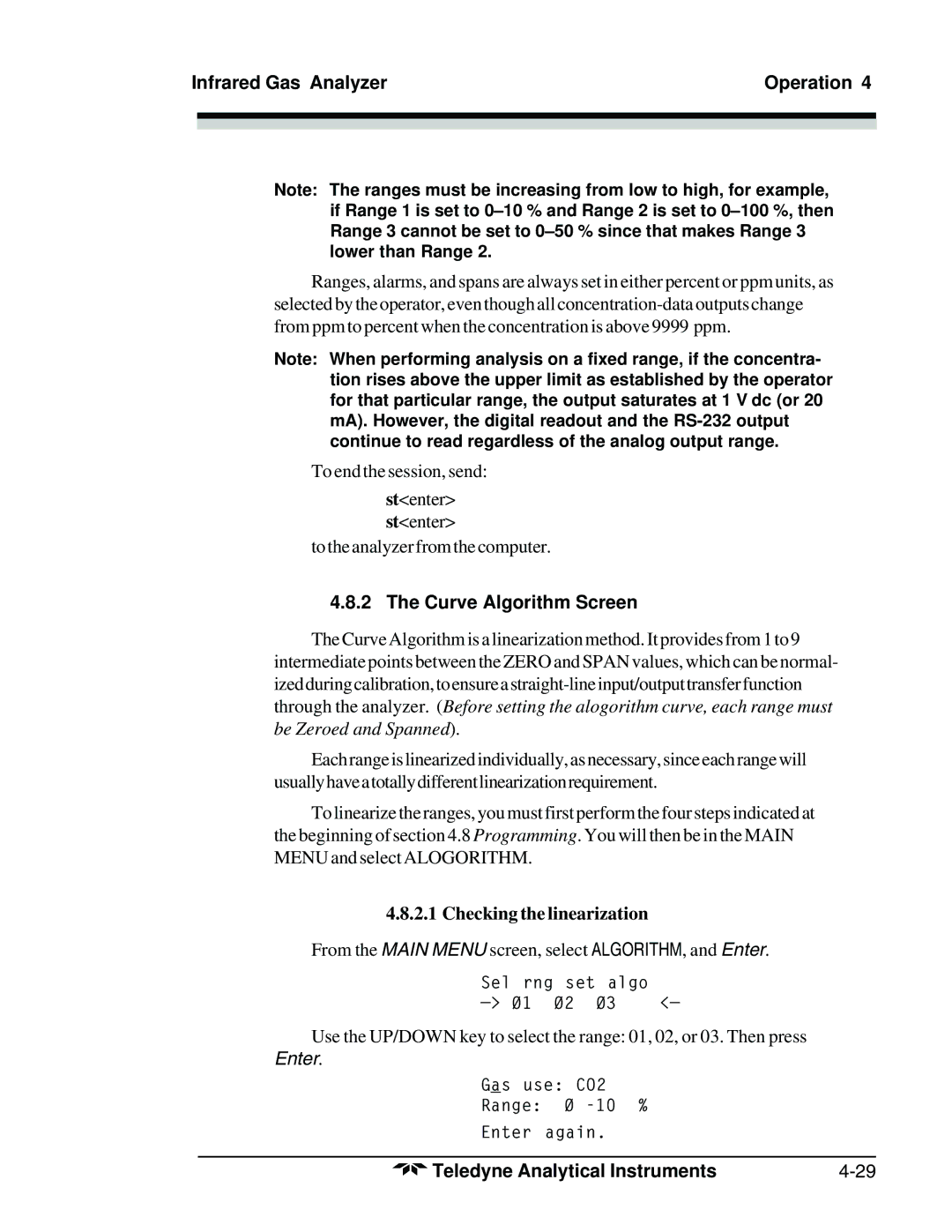Infrared Gas Analyzer | Operation 4 | |
|
|
|
|
|
|
|
|
|
Note: The ranges must be increasing from low to high, for example, if Range 1 is set to
Ranges, alarms, and spans are always set in either percent or ppm units, as selected by the operator, even though all
Note: When performing analysis on a fixed range, if the concentra- tion rises above the upper limit as established by the operator for that particular range, the output saturates at 1 V dc (or 20 mA). However, the digital readout and the
To end the session, send:
st<enter> st<enter>
to the analyzer from the computer.
4.8.2 The Curve Algorithm Screen
The Curve Algorithm is a linearization method. It provides from 1 to 9
intermediate points between the ZERO and SPAN values, which can be normal- ized during calibration, to ensure a
Each range is linearized individually, as necessary, since each range will usuallyhaveatotallydifferentlinearizationrequirement.
To linearize the ranges, you must first perform the four steps indicated at the beginning of section 4.8 Programming. You will then be in the MAIN MENU and select ALOGORITHM.
4.8.2.1 Checking the linearization
From the MAIN MENU screen, select ALGORITHM, and Enter.
Sel rng | set | algo |
|
Ø2 | Ø3 | <— |
Use the UP/DOWN key to select the range: 01, 02, or 03. Then press Enter.
Gas use: CO2
Range: Ø
Enter again.
Teledyne Analytical Instruments |
